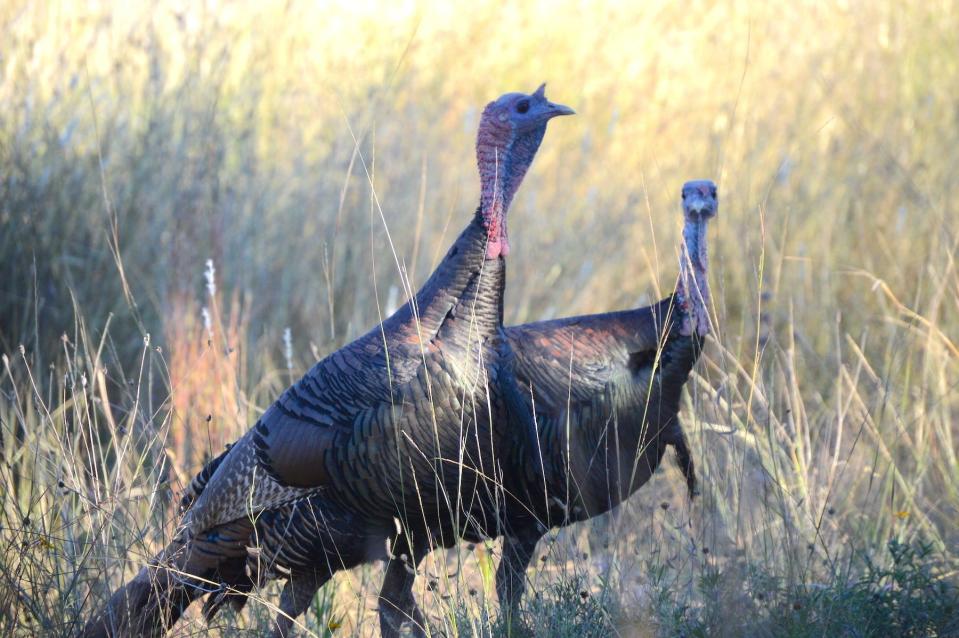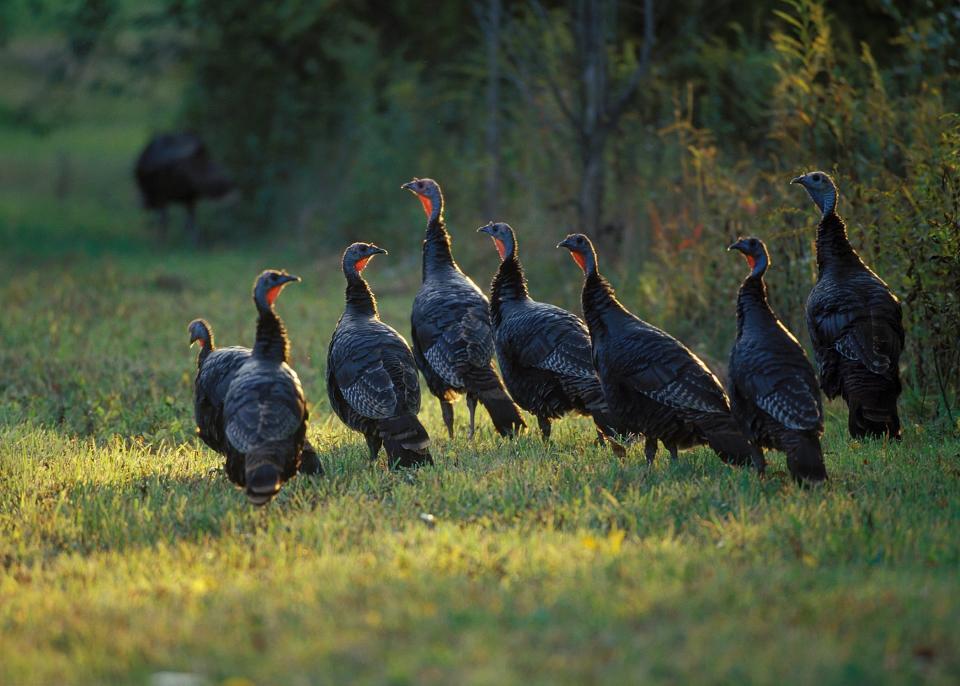The best thing about spring turkey hunting season in Texas? Those gobblers are everywhere

Anybody who knows anything about and loves spring turkeys in Texas: We have hundreds of thousands of Rio Grande subspecies spread out across Central Texas and the Edwards Plateau fair out into the Trans-Pecos and up into the Panhandle.
They are widespread and pretty easy to find, especially if you have even a small piece of property you own or lease. They are attracted to creeks and drainages where they can travel in relative piece, snapping up grasshoppers and caterpillars as they move.
One nice thing about our turkeys around the Hill Country is they are pretty predictable as to when they’ll be strutting and gobbling and chasing hens. It depends on the amount of daylight that strikes their eye and a little on rainfall to produce enough food for them to forage successfully during their daily travels.
And they do travel during the day, usually from one feeding area to the next, making them susceptible to ambush kind of hunting. I honestly don’t believe we should shoot them with rifles or out of blinds, though those are popular with many hunters who don’t think they need the thrill of a gobbler calling and strutting in front of them when they shoot.
If you look for them, you see turkeys all over
For a bird as easy to find as a wild turkey in Texas, Rio Grandes can be, frustratingly, virtually invisible if they aren’t on the move after hens. Then we are forced to be in the woods before daylight listening for the gobbling on the roost and as they strut and show off for hens on the ground.
On a recent afternoon, I was driving back into our neighborhood just outside Burnet when I spotted an enormous gobbler with a beard over 10 inches long, strutting for a hen about 50 yards off the road. I’d never seen him there before, though I’ve heard them gobbling in the woods around us and have seen hens sitting on nests almost in our yard.
Which only proves the old saying: “Turkeys are where you find them.” And you can find them almost anywhere right now. Bobby Parker sent me a video recently of a gobbler in his yard at Camp Verde, strutting and gobbling around for a hen.
The gobbler strutted across the driveway and up to Bobby’s pickup under a shed, where he finally saw his reflection in a chrome bumper. That only left him feeling chapped at the nerve of the gobbler he saw, and he began a loud “putt” that ended with a bang as he poked the fender with his beak. When that didn’t force the reflection to leave, he swiped it with a wing. Hard!

Helpful hint: Don't ever get into a fight with a turkey
That’s how they fight, too. With wings and spurs and beaks, dealing out body blows meant to establish their dominance of their foe and force them to leave the area. I once encountered a pair of gobblers strutting beside a road in the Panhandle. It was violent and prolonged. We drove by that spot several times during the next 90 minutes, and the pair were still locked up with necks wrapped around each other in an almost romantic embrace.
I got out and took pictures and was able to walk right up to them without stopping the fight. Gobblers are legendary for their tenacity during a fight over a hen. But one of my favorite stories about spring turkeys was courtesy of Monty Pannell, an old friend who lived in Rio Frio. Monty was famous for his outdoor skills and high school athletic endeavors.
One day, he told me, he was driving around the Stowers Ranch west of Kerrville when he saw a big gobbler trapped by his own limited imagination in a feeder pen. Getting out of his truck, Monty thought he’d try to see how close he could get to the turkey before the bird remembered he could fly and took off.
But when Monty got close to the pen, the gobbler panicked and began running around and around. When he finally jumped out of the pen and took off running, Monty said, “I thought, you know, I bet I could catch him if I chased him down.”
So if anyone had been around that afternoon, they would have seen a grown man sprinting after a mature gobbler that was running along a high fence. Monty chased the bird into a corner and managed to grab the bird and pin him to the ground.
Turkeys, like any wild animal, are ferociously strong and willing to fight. “I had him on his back with my knees on his wings,” Monty told me, “and that bird like to’ve beat me to death. I didn’t know what to do so I just reached down and grabbed his old beard and yanked it off.”
So if you ever see a big gobbler running around without a beard, remember Monty and his trophy turkey beard. That’s how he got away.
Turkey seasons in Texas
North Zone, March 30-May 12; South Zone, March 16-April 26; Eastern Zone, April 1-30. Bag limits are four gobblers per season, except in the Eastern Zone, which is one per license. Check your county listings for the dates for your county.
This article originally appeared on Austin American-Statesman: Spring turkey hunting season is about to begin in the state of Texas

